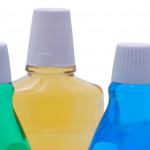
Mouthwashes are a good vehicle in which to incorporate chemotherapeutic agents because of their relative ease. Chlorhexidine (CHX) is widely used mouthwash with a plaque inhibiting effect the addition of fluoride to CHX mouthwash has been shown to inhibit canaries and they also reduce the effective concentration of CHX needed.
The aim of this review once to assess the efficacy of a chlorhexidine mouthwash containing sodium fluoride (NaF) compared to a chlorhexidine mouthwash alone on the parameters of plaque, gingivitis and discoloration.
Methods
Searches were conducted and the Medline, Cochrane Central, Embase databases. Two reviewers independently selected studies, assessed quality and abstracted data. Randomised controlled trials (RCT) or controlled clinical trials (CCT) published in English comparing chlorhexidine and sodium fluoride mouthwash with chlorhexidine mouthwash where considered. The primary outcome was plaque, secondary outcomes included bleeding on probing(BOP) gingival index (GI) and tooth discolouration (DS). Meta-analysis was performed where feasible. The overall body of evidence was assessed using the GRADE process.
Results
- 10 clinical trials (447 patients) reported in 9 publications are providing the 13 comparisons were included.
- 5 compared mouthwash as an adjunct to brushing
- 8 were non-brushing comparisons-4 using an experimental gingivitis model.
- 2 studies were considered to be at moderate risk of bias, 8 at low risk of bias.
- No significant difference was observed for plaque score reduction in the brushing studies the end scores (diffM; -0.04, P = .36; 95%CI: [-0.13, 0.05]) nor the differences (diffM; 0.11, P = .33; 95%CI: [-0.12, 0.24]).
- None of the experiments demonstrated a statistical significant difference regarding Gingival Index, Bleeding Score or Discoloration Scores.
Conclusions
The authors concluded: –
From this study, it can be concluded that NaF and CHX may be present in the same MW without reducing CHX efficacy with respect to plaque and gingivitis scores. Moreover, no difference in the development of tooth discoloration was observed.
Comments
A Cochrane review published last year (Dental Elf – 3rd Apr 2017) demonstrated high-quality evidence that chlorhexidine reduced gingivitis in individuals with mild information. The Cochrane review only included studies with a minimum of a 4-week follow-up period. Only three of the studies included in this current review where of more than four weeks duration, which may be relevant in relation to the tooth discolouration outcome in particular.
As noted by the authors the review was restricted to studies published in English which may mean that relevant publications were excluded. They also highlight that the short-term nature of the studies means that any impact of chlorhexidine on fluoride in relation to caries prevention cannot be assessed. In addition, many of the studies were carried out on medical or dental hygiene students so there may be some implications in relation to generalisability of the findings.
Links
Primary Paper
Elkerbout TA, Slot DE, Van Loveren C, Van der Weijden GA. Will a chlorhexidine-fluoride mouthwash reduce plaque and gingivitis? Int J Dent Hyg. 2018 Mar 7. doi: 10.1111/idh.12329. [Epub ahead of print] Review. PubMed PMID:29512317.
Other references
Dental Elf – 3rd Apr 2017
